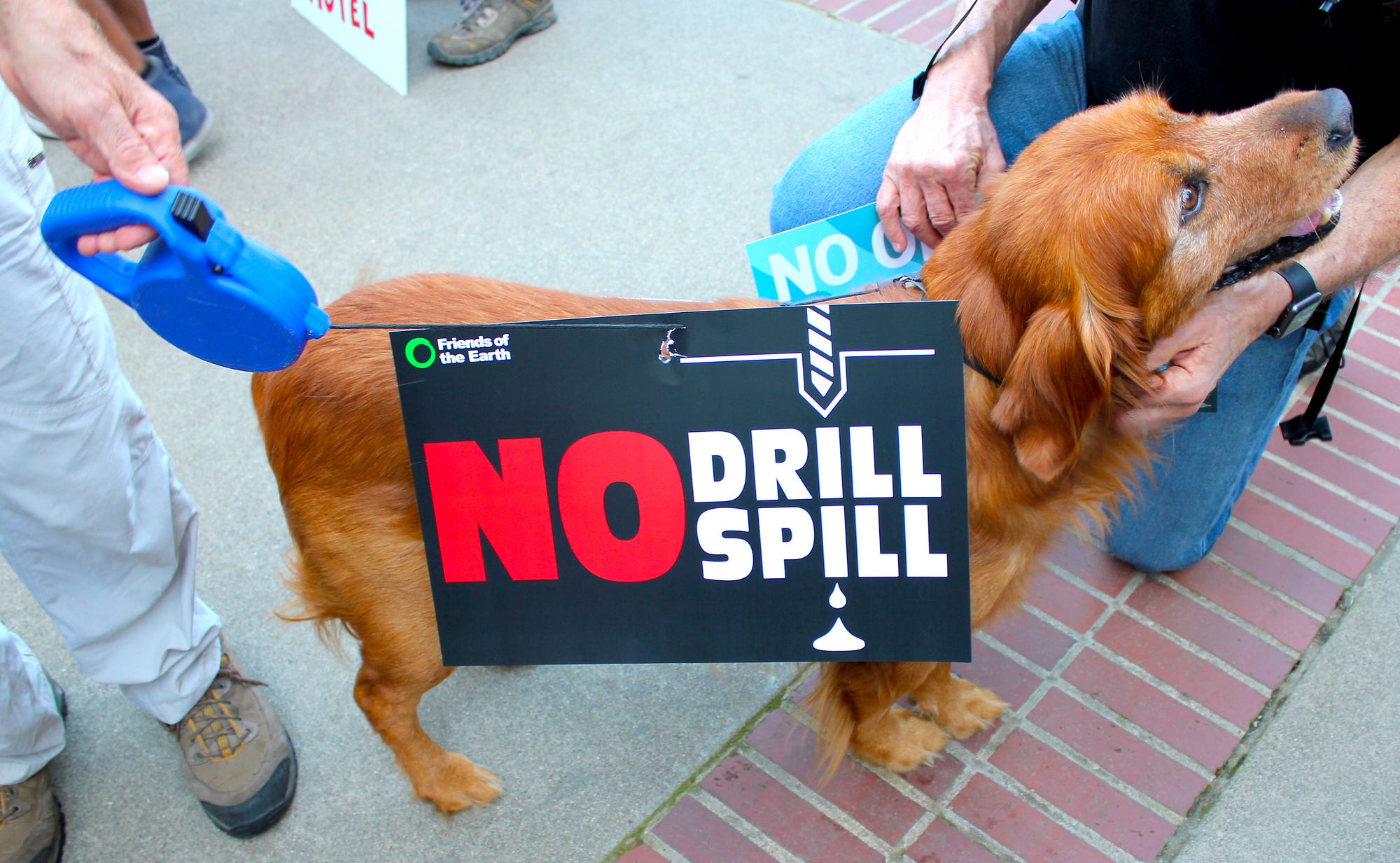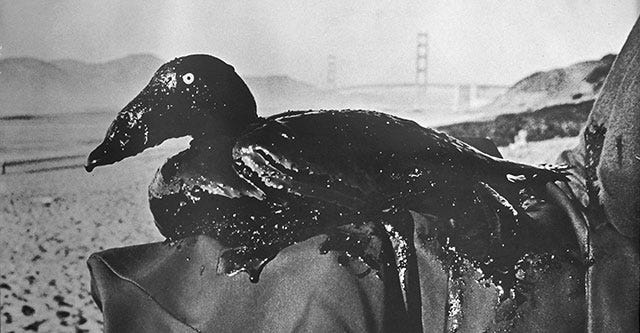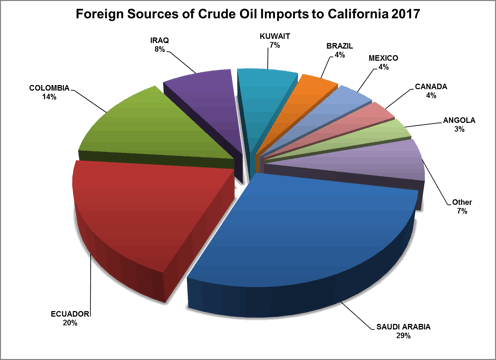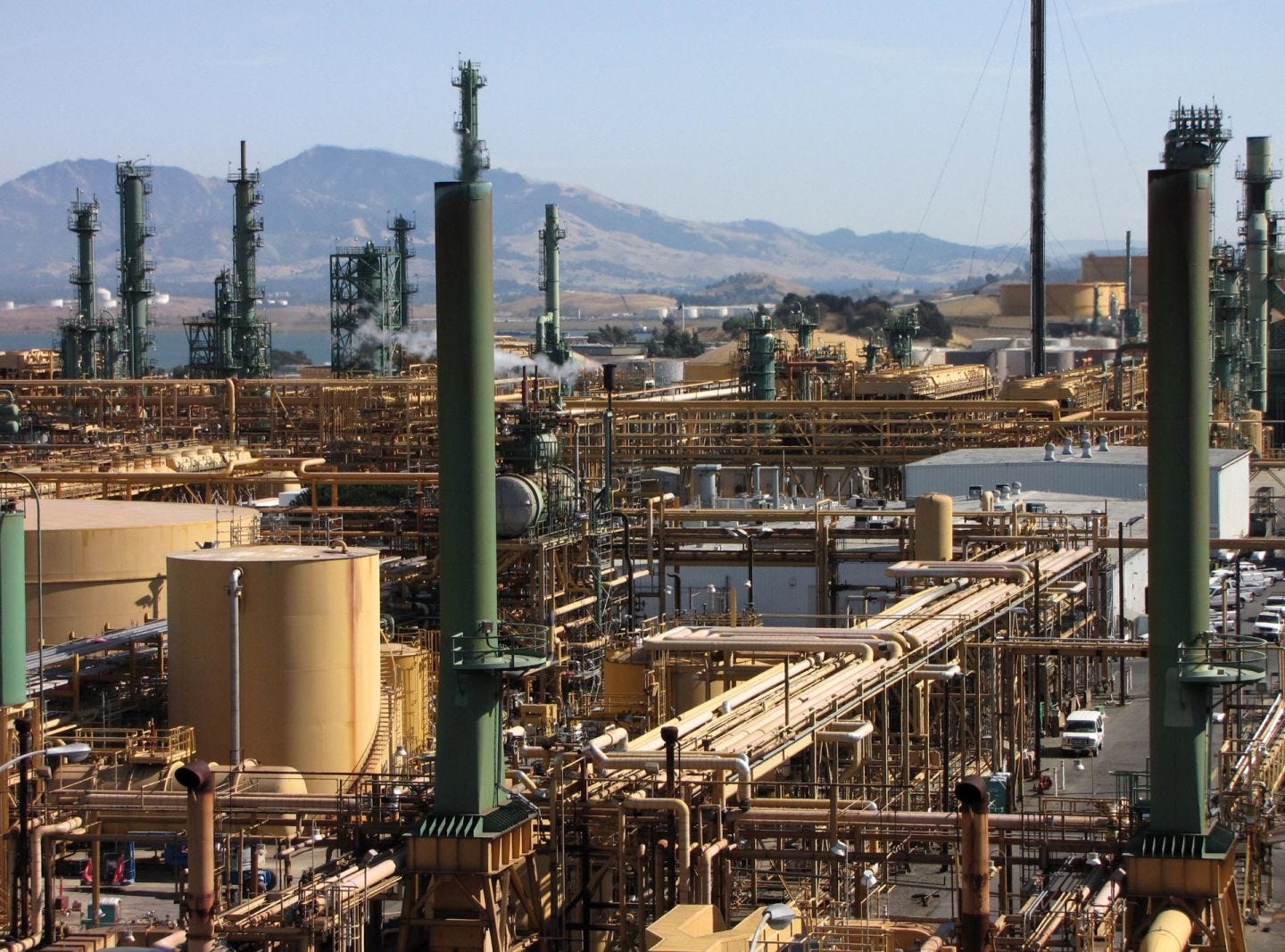- Blog
- Oceans
- California Climate Accountability
- Expanded Offshore Drilling Threat Brings New Attention to Oil Tanker Spill Risks
Expanded Offshore Drilling Threat Brings New Attention to Oil Tanker Spill Risks
by Gary Graham Hughes, senior California advocacy campaigner 2017 sets new record in foreign oil tankers delivering crude — and spill risk — to California coast

Donate Now!
Your contribution will benefit Friends of the Earth.
Stay Informed
Thanks for your interest in Friends of the Earth. You can find information about us and get in touch the following ways:
Coastal communities located along the entire length of California, from Del Norte County to San Diego, are organizing to stop a Trump-Zinke plan to expand offshore oil and gas drilling in federal waters off the coast of the state.
Thousands of individuals, hundreds of organizations and businesses, and dozens of elected officials in California have taken an explicitly public stance to protect the Pacific Coast from new drilling leases and operations in federal waters. All oppose the draft five-year plan the Trump Administration proposed for Outer Continental Shelf offshore oil and gas leasing.
The draft-drilling plan released by the Bureau of Ocean Energy Management of the U.S. Department of the Interior endeavors to aggressively offer new lease sales in federal waters that are currently exempted from fossil fuel development. The expanded offshore drilling threat goes beyond the Pacific, and includes the Atlantic, the entirety of the Gulf of Mexico, and almost all of Alaska’s oceans.
Public comment on this draft five-year plan closed in early March, and condemnation of the proposal to brazenly open up extensive new areas of ocean waters under federal jurisdiction to oil and gas drilling was widespread, both across the state and nationwide.
Ocean protection and climate justice advocates anticipate that the Trump-Zinke plan will be circulated again, in a reduced and (what proponents will certainly call) a more “reasonable” form, after the November 2018 election.

The purpose of waiting until after the election is to reduce political friction and fallout from the offshore drilling plan, which is extensive. The paring back of the drilling plan to a more “reasonable” extent, perhaps excluding Northern California and the Pacific Northwest as well as the Atlantic, would be intended to feign compromise, divide and conquer coastal protection activists, and make the reduced drilling plan seem more palatable.
Maintaining a high level of opposition to increased offshore oil drilling activities in federal waters is important for coastal protection and climate justice advocates.
No matter what happens next with the Trump-Zinke fossil-fueled assault on our oceans, the threat and risk of broadly increased oil and gas drilling off the California coast, as well in other ocean regions, has created new awareness and concern regarding the dangers of industrial oil spills in marine environments.
Greater public scrutiny of documented pollution damage from offshore oil drilling has cast a light on another petroleum industry threat to California’s coastal ecosystems and communities: oil tanker accidents.
The 1969 Santa Barbara Channel Platform A blowout provides a salient historical reminder of the damage that can be done when fossil fuel infrastructure fails and massive amounts of unrefined crude are spilled into the surrounding environment. The 1969 spill is an important benchmark in the evolution of the environmental movement in California.
This Californian movement was catalyzed even further by another oil spill disaster less than two years later. In January 1971, two oil tankers belonging to Standard Oil (now Chevron) ran into each other in dense fog just outside of the Golden Gate Bridge. The ensuing spill wreaked havoc on beaches both inside and outside San Francisco Bay. The tankers then drifted together while spilling oil, until they finally came to rest on Angel Island, in the heart of the Bay.

This disaster accentuated the already existing public outrage about oil spills on California’s coast after the Santa Barbara blowout.
More vivid in the collective memory of Northern Californians than the 1971 San Francisco Bay oil spill is the relatively recent 2007 Cosco Busan accident. It was, predictably, a foggy day when the container ship ran into the main structure of the Bay Bridge, dumping tens of thousands of gallons of bunker fuel into the bay, fouling beaches and wildlife throughout the area.
Though receiving less attention than current and proposed offshore oil drilling operations, marine deliveries by oil tanker have historically been, and are increasingly, a major mode of transport for the petrochemical industry in California.
In fact, in 2017 California set a new record high for imports of foreign sourced crude oil to the refinery sector in the state.
This means that more oil tankers than ever are delivering crude sourced from the Middle East countries of Kuwait, Saudi Arabia, and Iraq, and Latin American countries such as Brazil, Mexico, Colombia, and Ecuador. Canada also sends crude by tanker and barge to California, and the proposed expansion of the Kinder Morgan Trans-Mountain pipeline threatens to push a flood of tar sands diluted bitumen into the California refinery sector.


Thus, concerns about oil spills from offshore drilling operations clearly extend to spill risks from oil tankers delivering crude to California refineries as well as from the export of finished products.
Coastal protection advocates in California should be aware of one oil tanker expansion project in particular.
Phillips 66 is currently seeking permission to dramatically expand oil tanker deliveries to their refinery in the community of Rodeo, on San Pablo Bay, at the northern extent of San Francisco Bay. As Phillips 66 now proposes to more than double the number of currently permitted oil tanker deliveries to their Rodeo refinery, this latest tanker expansion request is being pursued after the previous granting of a permit to increase annual oil tanker traffic to 59 ships a year.
All told, if Phillips 66 were to be granted their current request to bring up to 139 oil tankers a year to the marine terminal at their Rodeo refinery, it would actually be a 500 percent increase from the average oil tanker traffic to the refinery from 2006–2010.

The exponential increase in oil tanker traffic inherently implies an increase in the risk of an oil spill.
In fact, in September 2016 a spill occurred at the Phillips 66 marine terminal when the Yamuna Spirit tanker was involved with a spill incident while offloading crude sourced from an Arabian port. The air pollution impact of this spill was immediate and severe, resulting in a “shelter-in-place” order for local residents, hundreds of odor complaints, and dozens of hospital visits for respiratory and other health ailments.
Unfortunately, the U.S. Coast Guard and the Bay Area Air Quality Management District have been less than transparent in communicating what really happened with the Yamuna Spirit spill, failing to provide either a play-by-play account of the accident or detailed information regarding the cause.
However, both Phillips 66 and the tanker operator were held responsible for the incident and fined by the authorities.
Neither has Philips 66 been transparent in sharing with affected community members and stakeholders exactly from where the crude would be sourced for the proposed doubling in oil tanker deliveries to their refinery.
Oil extracted in Arctic Alaska and transported down the Trans-Alaska Pipeline System for loading on tankers remains a primary source of crude for California refineries, including the Phillips 66 Rodeo facility. However, SF Bay Area environmental justice advocates have made the informed analysis that Phillips 66 will be looking to massively increase imports of tar sands crude coming from the proposed expansion of the Trans-Mountain Pipeline in British Columbia.
Diluted bitumen, the technical name for tar sands crude that is prepared for transport, presents an unprecedented spill risk for the California coast and the SF Bay, as ‘dilbit’ tends to sink upon spillage in marine environments.

By using San Francisco Bay as a laboratory for a potential ‘dilbit’ spill, Phillips 66 is truly taking California into uncharted waters.
As ocean defenders are adamant in saying about offshore oil drilling spill risks: “it is not a question of if, but when.”
The same clearly goes for oil spills from oil tankers and barges.
The threat of expanded offshore oil drilling has served as a wake-up call for coastal protection advocates. Major oil tanker spill disasters along the California Coast carry the same price — and rise to the same level of threat — as another spill from offshore drilling.
We must remain vigilant in protecting our coasts from the dangerous impacts of extreme energy extraction and transport.
Voicing opposition to the Phillips 66 oil tanker onslaught in SF Bay is a logical extension to opposing the greed of the Trump-Zinke plan to pursue new offshore oil drilling in federal waters off the California coast.
